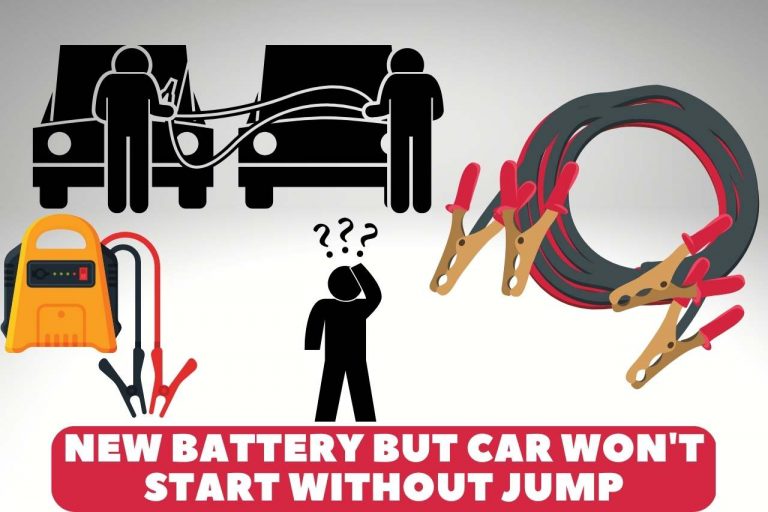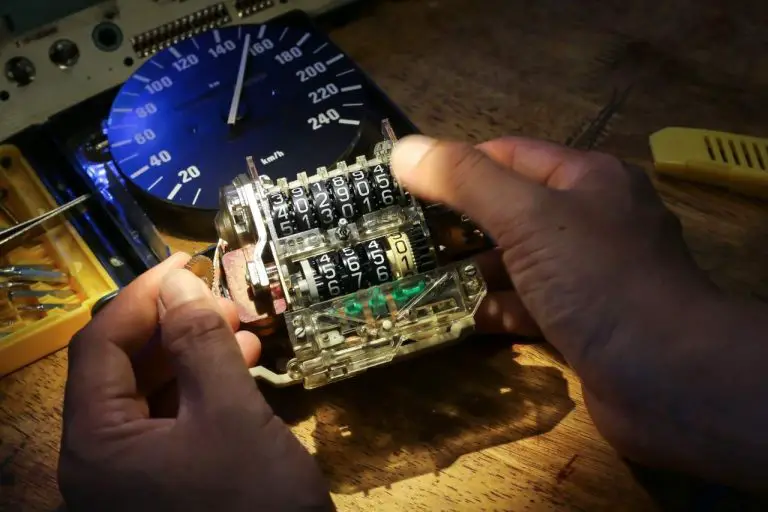Oil in the Throttle Body: Causes, Effects, and Remedies
Welcome to our investigation of the throttle body and its interaction with oil, a crucial part of contemporary internal combustion engines. The throttle body is essential for controlling the airflow to an engine in the complex realm of automobile engineering. However, oil in this system prompts inquiries and provides information about more general mechanisms. We explore the relevance of oil in the throttle body, its potential effect on engine performance, and the variables that could affect this occurrence in this excursion.
Join us as we dissect the nuances of this mutually beneficial relationship between oil and mechanics, shedding light on a subtle and essential factor in automobiles.
Is It Normal To Have Oil In The Throttle Body?
Most of the time, oil in the throttle body is abnormal. A part of the engine that controls how much air enters the engine—essential for proper combustion—is the throttle body. Usually, oil shouldn’t be present here because it can impede the engine’s and its parts’ efficient operation.
The Positive Crankcase Ventilation (PCV) system is intended to improve engine performance by venting blow-by gases and extra pressure from the engine’s crankcase. When the PCV system isn’t working correctly, oil vapour may be sucked into the intake system, causing oil to build up in the throttle body. Oil separators or breathers may be found in the intake system of some cars. If broken or clogged, these parts may allow oil to enter the throttle body.
Oil being forced into places it shouldn’t be, such as the throttle body, and excessive oil consumption are both effects of having too much oil in the engine.
Due to worn or broken engine seals, oil can leak into areas it shouldn’t, such as the intake system.
Due to the increased pressure and complexity of the system, turbocharged engines may have a more significant chance of oil entering the intake system. It is advised to have your car evaluated by a trained mechanic if you see oil in your throttle body or suspect oil entering the intake system.
Numerous problems, such as lower engine efficiency, fouled spark plugs, increased carbon buildup, and potential harm to delicate sensors and components, can be brought on by oil in the throttle body.
Symptoms Of Oil In The Throttle Body
- An improper air-fuel mixture entering the engine due to oil in the throttle body can cause a rough or uneven idle. When the car is stopped, you can detect the engine trembling or shaking more than usual.
- Oil buildup in the throttle body can interfere with combustion, reducing engine power and performance. When you press the gas pedal, you can feel a lack of responsiveness and sluggish acceleration.
- Especially at idle or low speeds, oil buildup in the throttle body can cause the engine to stall. The oil could cause the throttle plate to get sticky, which would impair its capacity to control airflow.
- Oil in the throttle body can cause an incorrect air-fuel combination, resulting in low fuel economy. You could discover that you need to refuel more often than average.
- Oil can cause excessive exhaust smoke, frequently bluish or grey, if sucked into the combustion chamber through the throttle body.
- The check engine light on your dashboard may turn on if oil is in the throttle body, which can activate many sensors in the intake system.
- Oil buildup can lead to engine misfires, reducing power noticeably and possibly making an engine run rough.
- Carbon deposits can form when the oil in the throttle body mixes with dirt and debris. These deposits may build up on the intake valves, throttle plate, and other parts, impacting airflow and engine performance.
- Oil in the throttle body can occasionally produce odd noises, such as clicking or ticking, indicating problems with the engine’s internal components.



What Causes Oil To Enter The Throttle Body?
The Positive Crankcase Ventilation (PCV) system is intended to vent the engine’s crankcase of accumulated pressure and surplus gases. If the PCV valve or related components are broken or blocked, oil vapours may enter the intake system, including the throttle body. Excessive blow-by gases from the combustion chamber into the crankcase may be caused by worn or broken piston rings.
These gases can potentially transport oil vapour, which might be sucked into the intake system. Oil consumption may rise as the engine ages and its parts deteriorate. Excessive wear on internal engine components like cylinder walls and valve seals can influence oil consumption and oil entering the intake system. If the engine adds too much oil, it may force extra oil into the intake system and other unintended locations.
Some automobiles feature intake system parts like oil separators or breathers to keep oil from getting into the system. These parts may permit oil to pass through if broken or blocked. Due to the increased pressure and heat, turbocharged engines may have higher oil circulation.
When the turbocharger’s seals are faulty, this might result in oil being sucked into the intake system. Over time, the seals that stop oil from leaking into the intake system through the valves and into the combustion chamber may get worn or destroyed. In some circumstances, coolant leaks can cause oil and coolant to mix, which may enter the intake system.
Is Oil In The Throttle Body Harmful?
Oil in the throttle body has the potential to alter the ideal air-fuel ratio required for effective combustion. Reduced engine power, poor acceleration, and generally worse performance may be the effects of this disruption.
Carbon deposits may form due to oil interacting with dirt and debris in the throttle body and intake system. These deposits may build up on the throttle plate, intake valves, and other parts, affecting the ability to drive and restricting airflow and efficiency. The throttle plate may become stuck or sticky due to oil buildup.
Due to this, there may be erratic throttle response, rough idling, and even probable stalling. Vibrations, a loss of power, and an increase in fuel consumption can all be brought on by oil in the intake system, which can cause engine misfires.
The proper operation of sensors in the intake system, such as oxygen and mass airflow sensors, might be hampered by oil. This may result in erroneous readings, turn on dashboard warning lights and impact engine management.
Increased maintenance requirements, such as regular cleaning and potential component replacements, might result from excessive throttle body and intake system oil. The intake system’s oil might harm important engine parts if not removed. Oil is not intended to burn in the combustion chamber, and using too much oil can shorten the lifespan of an engine and hasten wear.
It’s necessary to deal with the root cause of oil in the throttle body and take the essential action to make things right to prevent these problems. The detrimental consequences of oil entering the intake system can be avoided by routine maintenance, careful engine care, and timely resolution of engine-related issues.
It is advised to have your car inspected by a trained mechanic to ascertain the cause and necessary repairs if you suspect oil in your throttle body or are exhibiting related symptoms.
How To Clean Oil From The Throttle Body Effectively?
Supplies required
Throttle body cleanser (made especially for this use)
Paper towels or sterile rags
Essential hand tools, depending on the vehicle (wrenches, screwdrivers, etc.)
Instructions
Safety measures:
Before you begin, make sure the engine is thoroughly cool.
To avoid unintentional electrical engagement, disconnect the battery’s negative terminal.
Where to Find the Throttle Body
The intake manifold, where air enters the engine, is often where the throttle body is located. If you’re unsure where it is, check the handbook or internet resources for your car.
Throttle Body Cleaning
Use a screwdriver or wrench to remove the throttle body from the intake manifold once it is reachable.
Utilize the throttle body cleaner by liberally misting it onto the body’s parts, such as the throttle plate and bore. Give the cleaner about a minute to sit to dissolve the oil and filth.
Cleaning by Hand
Remove the dissolved dirt and oil by gently wiping it away with a clean rag or shop towel. Be careful not to nick or harm the delicate components.
To fully access and clean both sides, you may need to open the throttle plate physically. Use the proper equipment to do this carefully.
Reassembly
If the throttle body was removed, carefully reinstall it to the intake manifold, ensuring all fasteners are secure.
Optional: cleaning
Consider using an intake manifold cleaner to guarantee a complete cleaning. The intake manifold and valves will benefit from removing carbon buildup in this way.
The battery reconnects, and then test
Reconnect the battery’s negative terminal.
To enable the cleaning agent to burn off completely, turn on the engine and let it idle for a while.
Remember, it is advised to seek the help of a qualified mechanic if you are unsure about any step or lack the necessary tools. The throttle body needs to be cleaned often. However, it should be done gently to protect delicate parts.
Cost Of Repairing Oil In The Throttle Body
DIY versus Expert Repair
You can clean the oil from the throttle body yourself with a throttle body cleaner if you are comfortable working on autos and have the required gear. Fees for professional repairs may include labour fees and any required replacement parts.
Cleaning Products
If you are cleaning it yourself, the main expenses are the throttle body cleaner and any additional cleaning products you require, like rags or shop towels.
Costs of Professional Labor
If you take your car to a mechanic, the labour price will depend on the shop’s hourly rate and how long it takes to find and fix the problem.
Throttle body cleaning may be included in a more extensive service package if there are additional difficulties with oil buildup or engine efficiency.
The mechanic doing the work, the area where they are located, and the make and model of the car will all affect the cost of the throttle body service. According to our study, this service’s typical fee might be between $50 and $200.
Here’s An Interesting Video To Watch,
VIDEO CREDITS: HumbleMechanic YouTube Channel
Recommended for You: Similar Articles to Explore







